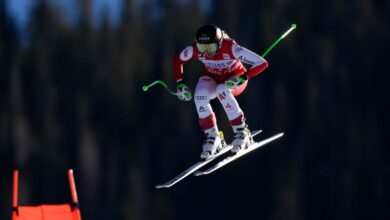Suzuki’s adopted scion Osamu dies after decades in charge – DW – 12/27/2024

The charismatic former boss of Suzuki, who helped turn the Japanese compact vehicle specialist into a globally competitive enterprise, had died aged 94 after a battle with malignant lymphoma, the company said on Friday.
Osamu Suzuki became the company CEO in 1978 and was either chief executive, chairman or president until 2021, when — already in his 90s — he stepped down and took up an advisory role.
The start of his tenure at the top coincided with some crucial milestones in Suzuki’s expansion beyond the Japanese car market, such as the launch of the small city car the Alto in 1979 that would become Suzuki’s longest-running and best-selling car of all time.
Also, while other Japanese manufacturers looked to markets like Europe, the Americas and later China for expansion, Osamu Suzuki’s first big international play was in India. In 1980, his company decided to partner with the Indian government and its struggling Maruti company.
The move was risky but the partnership worked. Suzuki has sold roughly one third of all its cars in India, making India comfortably the company’s most important market outside Japan.
The company was consistently among the top 10 sellers of motorcycles worldwide during most of Osamu Suzuki’s tenure, and also a key player in motorcycle racing in Japan and beyond.
Suzuki — from looms to compact cars
The company was founded by patriarch Michio Suzuki in 1909. It initially specialized in manufacturing looms, the engineer Suzuki’s design specialty.
In the 1930s, Michio Suzuki was looking to diversify the company, and identified personal transportation, particularly motorized bicycles or motorbikes, as a promising avenue for expansion.
However, during the World War II Japan’s government forbade the company from investing in “non-essential civilian production” and so its plans were shelved.
Soon after the war, with its loom business under threat from automation and other advancements, Suzuki hurriedly returned to his transportation blueprints.
The first product for still-decimated post-war Japan was almost a precursor to an E-bike: a simple bicycle with a tiny, 1 brake horsepower, two-stroke petrol engine attached for extra thrust — the Suzuki Power Free.
Michio was also ahead of his time with his first car, the SuzuLight, which foresaw Japan’s demand for super-compact “kei” cars, designed for use in big cities with bustling roads and not enough parking space.
Who was Osamu Suzuki, the adopted heir who went the distance?
Born Osamu Matsuda in 1930, Suzuki worked in banking after graduating from Tokyo’s Chuo University School of Law.
He joined Suzuki Motor in 1958, as a result of his marriage to one of the patriarch’s granddaugthers, Shoko Suzuki. This was a year after Michio had stepped down as chairman and joined the advisory board.
Michio’s family empire had no sons waiting in line and so Osamu took the Suzuki name and began rising the ranks in the company.
During the intervening years, three other adopted sons had stints at the top of Suzuki, but none enjoyed the success or longevity Osamu would on taking charge in 1978.
Known for his jovial nature and candid remarks, he did not shy away from the company’s focus on the smaller, budget end of the car market.
He would also regularly acknowledge that Suzuki was trailing behind Japanese giants like Honda and Toyota in sales — once calling himself an “old guy from a small to mid-size company.”
msh/dj (AP, dpa)




